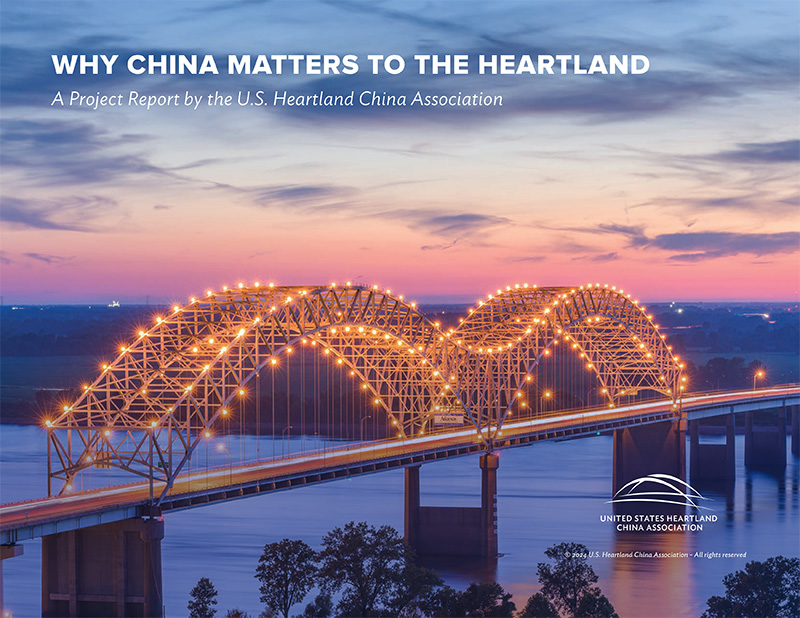The China-United States Exchange Foundation (CUSEF) is proud to join renowned institutions including The Carter Center, Ford Foundation, Henry Luce Foundation, and Carnegie Corporation of New York in supporting a research project by the U.S. Heartland China Association. In addition to exploring important aspects of the bilateral relationship, such as culture and education, the publication also focuses on business—a key part of our interest at CUSEF.
INTRODUCTION
In the summer of 2021, the U.S. Heartland China Association (USHCA) launched the “Why China Matters to the Heartland” project in response to the growing interest of Heartland community leaders who would like to better examine the U.S.-China relationship at the local level. Combining data from public sources with insights gained from outreach interviews, the “Why China Matters to the Heartland” report attempts to provide an easy-to-access snapshot for each of the 21 states we serve.
Even as the U.S. and China shift toward strategic competition, USHCA believes that the interests of the American people are best served by thoughtful exploration of opportunities with the Chinese people, rather than a wholesale dismissal of ties. And so, we remain committed to promoting a productive and mutually beneficial relationship between the American Heartland region and China through exchanges in culture, education, and business. This project is an effort with that goal in mind.
“Why China Matters to the Heartland” is a resource for business leaders, state and local politicians, higher education professionals, and anyone else who wants to understand key data of the Heartland’s cultural, educational, and business ties to China. It also includes perspectives from Heartland community leaders that highlight the benefits their communities have reaped through exchange and interaction with China.
For example, did you know Illinois was the first state to open a trade office in China in 1974, before the normalization of U.S.-China relations? Or that 52% of all U.S. soybeans—a crop originally from China that is widely cultivated across the Heartland region today—is exported to China, our No.1 agricultural export destination? You might be surprised to learn that 6 of the top 25 American universities with a high number of international students, many of them Chinese, are in the Heartland states. Or that St. Louis and Nanjing became the first pair of sister cities between the two countries in 1979.
Few grasp the longevity and multi-faceted nature of the U.S.-China relationship across culture, education, and business. “Why China Matters to the Heartland” helps put things in perspective.
